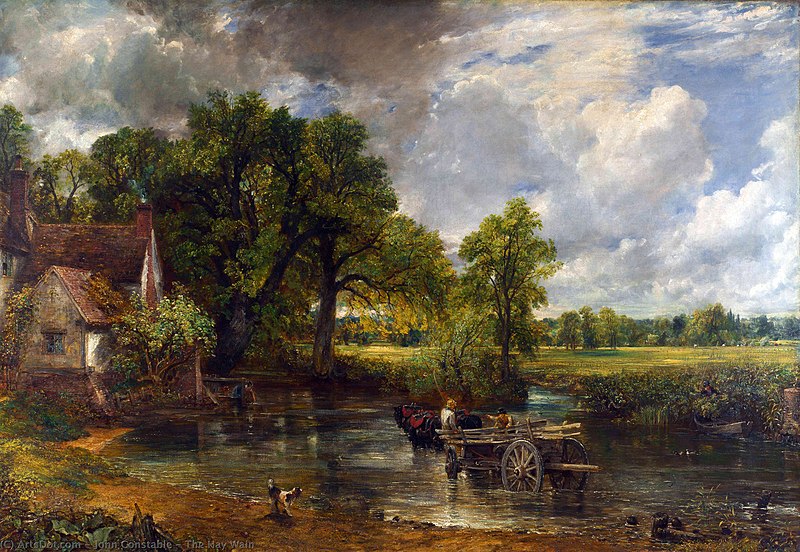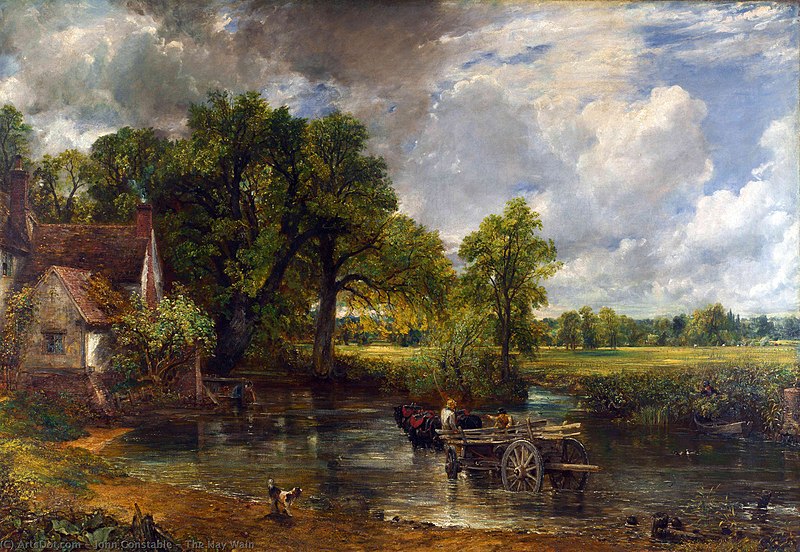In the heart of the British countryside, nestled within the lush, vibrant greenery, lies a scene so enchanting, it captured the heart of John Constable and, subsequently, the world. 'The Hay Wain', a masterpiece that embodies the essence of the English countryside, offers more than just a picturesque scene; it is a window into the pastoral life of early 19th century Britain and a testament to the timeless beauty of nature. Here at Lithobee, we delve into the captivating story behind this iconic work, exploring its place within the broader tapestry of countryside art in Britain.

But 'The Hay Wain' is more than just a snapshot of rural life. It represents a pivotal moment in British art, a shift from the grandiose, idealised landscapes of earlier periods to a more realistic, emotionally resonant portrayal of the natural world. Constable's meticulous attention to the changing skies, the vibrant, living landscapes, and the simple, yet profound moments of daily life marked a departure from the traditional approach to landscape painting. His work celebrated the beauty of the English countryside, influencing not only the trajectory of British art but also inspiring a deeper appreciation for the natural world.
The influence of the English countryside on art did not begin with Constable, nor did it end with him. From the first works of art to feature flowers, British artists have long been inspired by the natural beauty that surrounds them. The detailed botanical illustrations of the 17th century, which sought to catalogue the rich flora of the British Isles, laid the groundwork for this artistic fascination with nature. As we move through the centuries, this admiration only grows stronger, with each era bringing its own perspective to the depiction of the English countryside.
In the wake of Constable, the Arts and Crafts Movement of the late 19th and early 20th centuries sought to reconnect art with nature, crafting designs that echoed the organic patterns and themes found in the natural world. Artists like William Morris created intricate floral patterns that continue to influence design and decor today. In more recent times, modern artists have continued to draw inspiration from the countryside, reinterpreting it through various styles and mediums, from the vivid, abstract landscapes of David Hockney to the contemporary interpretations that continue to emerge.
At Lithobee, we celebrate this rich heritage of countryside art, offering a curated selection of art prints that capture the beauty and diversity of the English landscape. From historical landscapes to modern interpretations, our collection invites you to bring the timeless allure of the countryside into your home. Whether you're drawn to the romantic realism of Constable's 'The Hay Wain' or the modern vibrancy of contemporary pieces, our prints offer a window into the enduring beauty of the British countryside.
'The Hay Wain' stands as a monument to the pastoral idyll, a reminder of the tranquility and beauty that nature holds. Through Constable's eyes, we are invited to take a moment, to step back from the hustle and bustle of modern life, and to appreciate the simple beauty of the countryside. It's a story of connection, of the timeless bond between man and nature, and of the power of art to capture the essence of the world around us.



